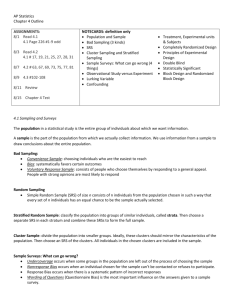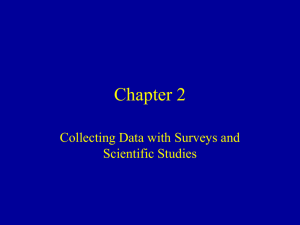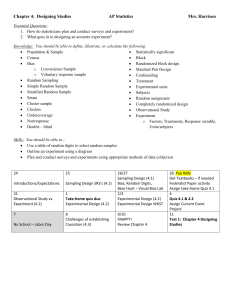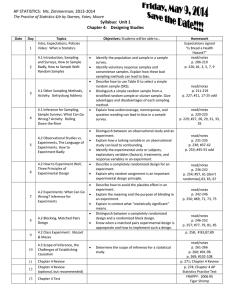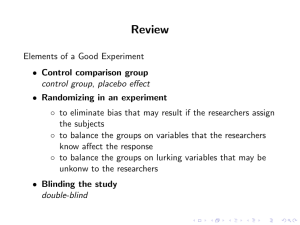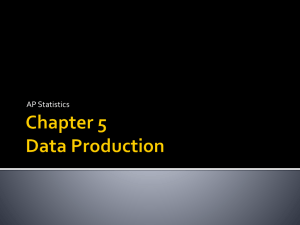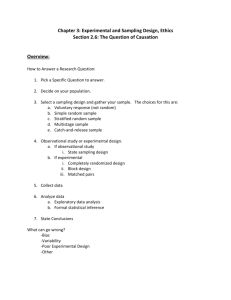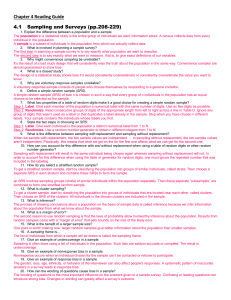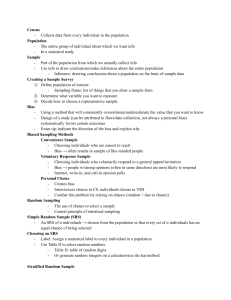Outline
advertisement
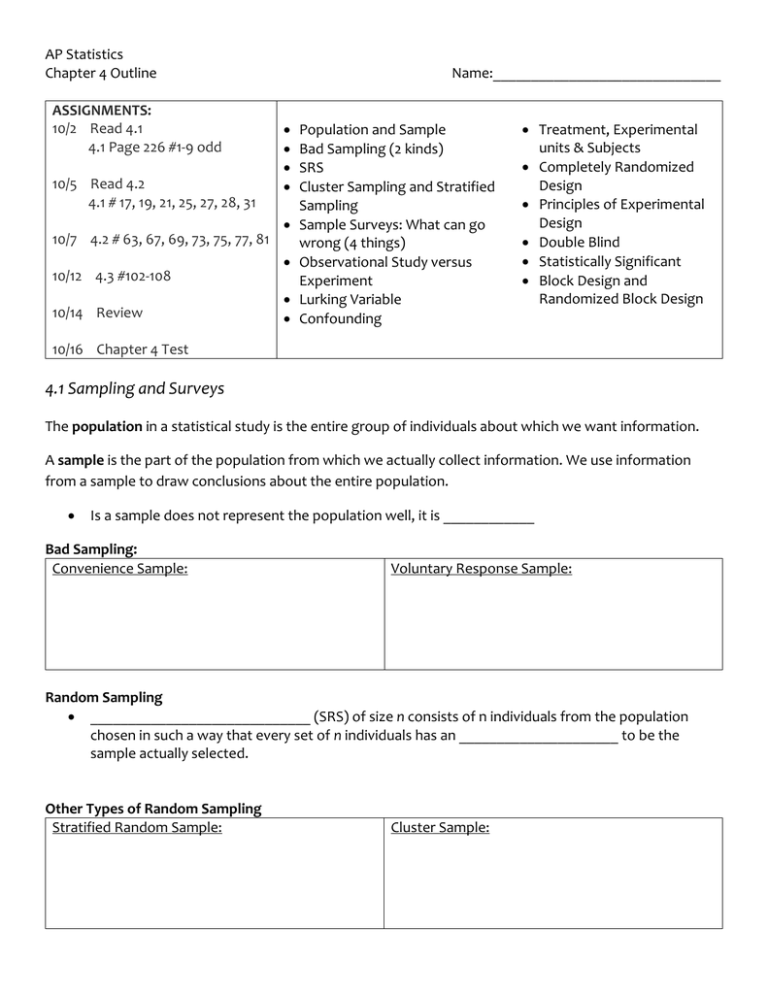
AP Statistics Chapter 4 Outline ASSIGNMENTS: 10/2 Read 4.1 4.1 Page 226 #1-9 odd 10/5 Read 4.2 4.1 # 17, 19, 21, 25, 27, 28, 31 Name:______________________________ 10/7 4.2 # 63, 67, 69, 73, 75, 77, 81 10/12 4.3 #102-108 10/14 Review Population and Sample Bad Sampling (2 kinds) SRS Cluster Sampling and Stratified Sampling Sample Surveys: What can go wrong (4 things) Observational Study versus Experiment Lurking Variable Confounding Treatment, Experimental units & Subjects Completely Randomized Design Principles of Experimental Design Double Blind Statistically Significant Block Design and Randomized Block Design 10/16 Chapter 4 Test 4.1 Sampling and Surveys The population in a statistical study is the entire group of individuals about which we want information. A sample is the part of the population from which we actually collect information. We use information from a sample to draw conclusions about the entire population. Is a sample does not represent the population well, it is ____________ Bad Sampling: Convenience Sample: Voluntary Response Sample: Random Sampling _____________________________ (SRS) of size n consists of n individuals from the population chosen in such a way that every set of n individuals has an _____________________ to be the sample actually selected. Other Types of Random Sampling Stratified Random Sample: Cluster Sample: Sample Surveys: What can go wrong? Undercoverage Nonresponse Bias Response Bias Wording of Question 4.2 Experiments An observational study observes individuals and measures variables of interest but does not attempt to influence the responses. An experiment deliberately imposes some treatment on individuals to measure their responses. Vocabulary: Lurking Variable: Example of Lurking Variable: Confounding: Example of Confounding: Treatment: Example of a Treatment: Experimental units are the smallest collection of individuals to which treatments are applied. Subjects: When the units are human beings. Random assignment in an experiment means that experimental units are assigned to treatments at random, that is, using some sort of chance process. Completely randomized design: Control Group: 3 Principals of Experimental Design: Control Random Assignment: Replication: Placebo Affect: “dummy pill” or inactive treatment that is indistinguishable from the real treatment. Double Blind: neither the subjects nor those who interact with them and measure the response variable know which treatment a subject received. Example: Block is a group of experimental units that are known before the experiment to be similar in some way that is expected to affect the response to the treatments. Randomized block design, the random assignment of experimental units to treatments is carried out separately within each block. Example: Matched Pairs Design: randomized blocked experiment in which each block consists of a matching pair of similar experimental units. Example: Statistically Significant: When an observed effect is so large that is would rarely occur by chance
